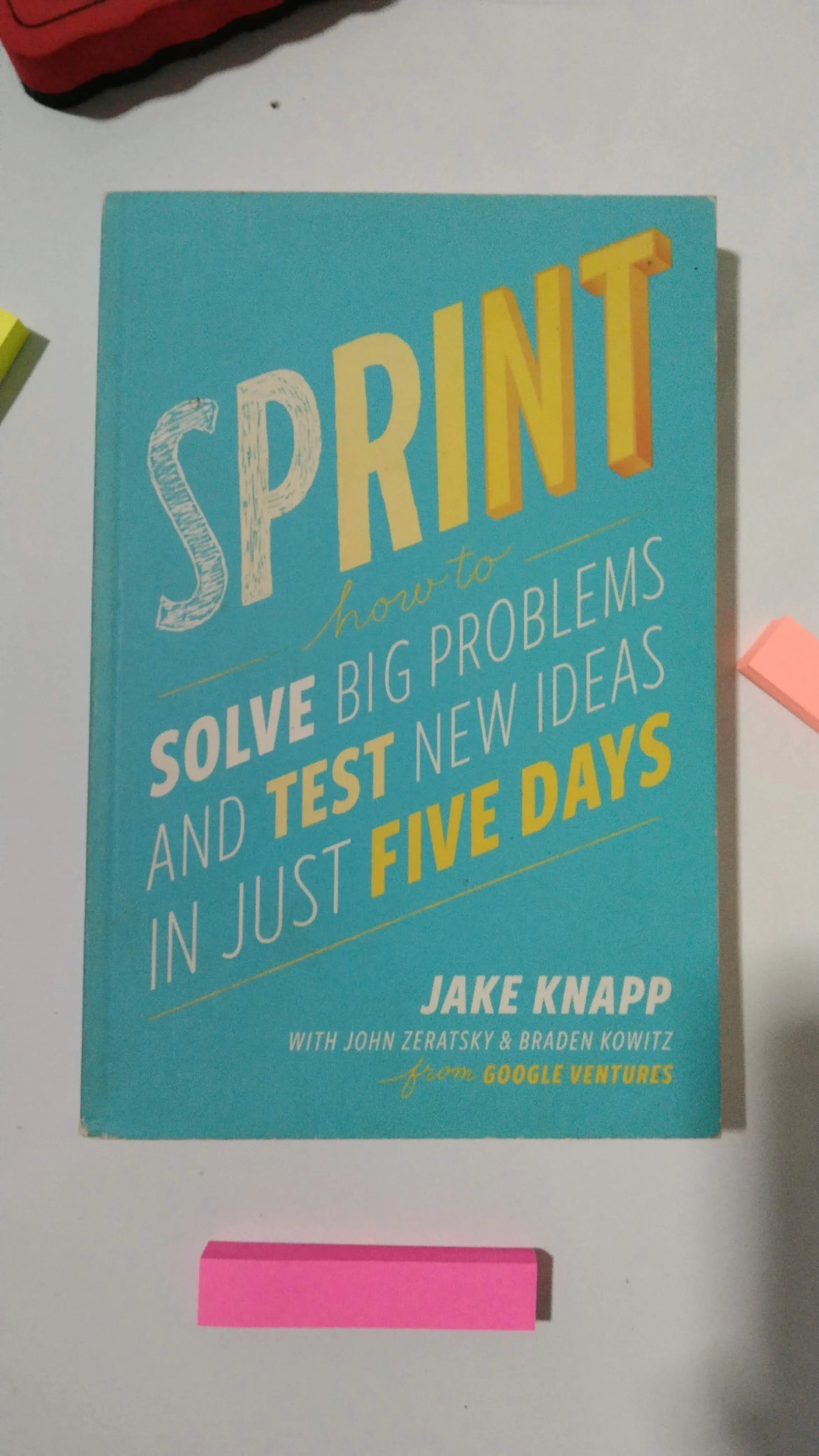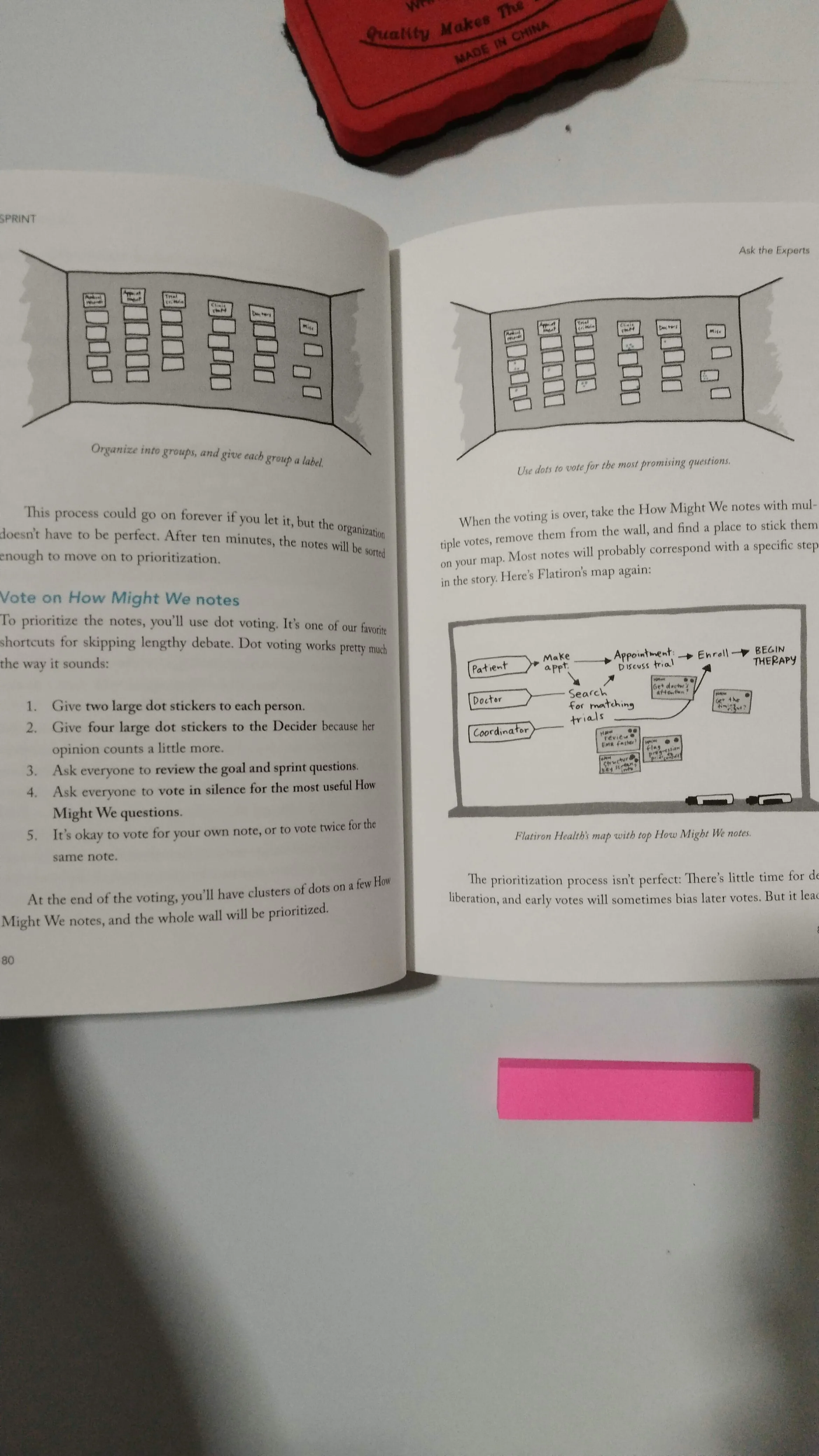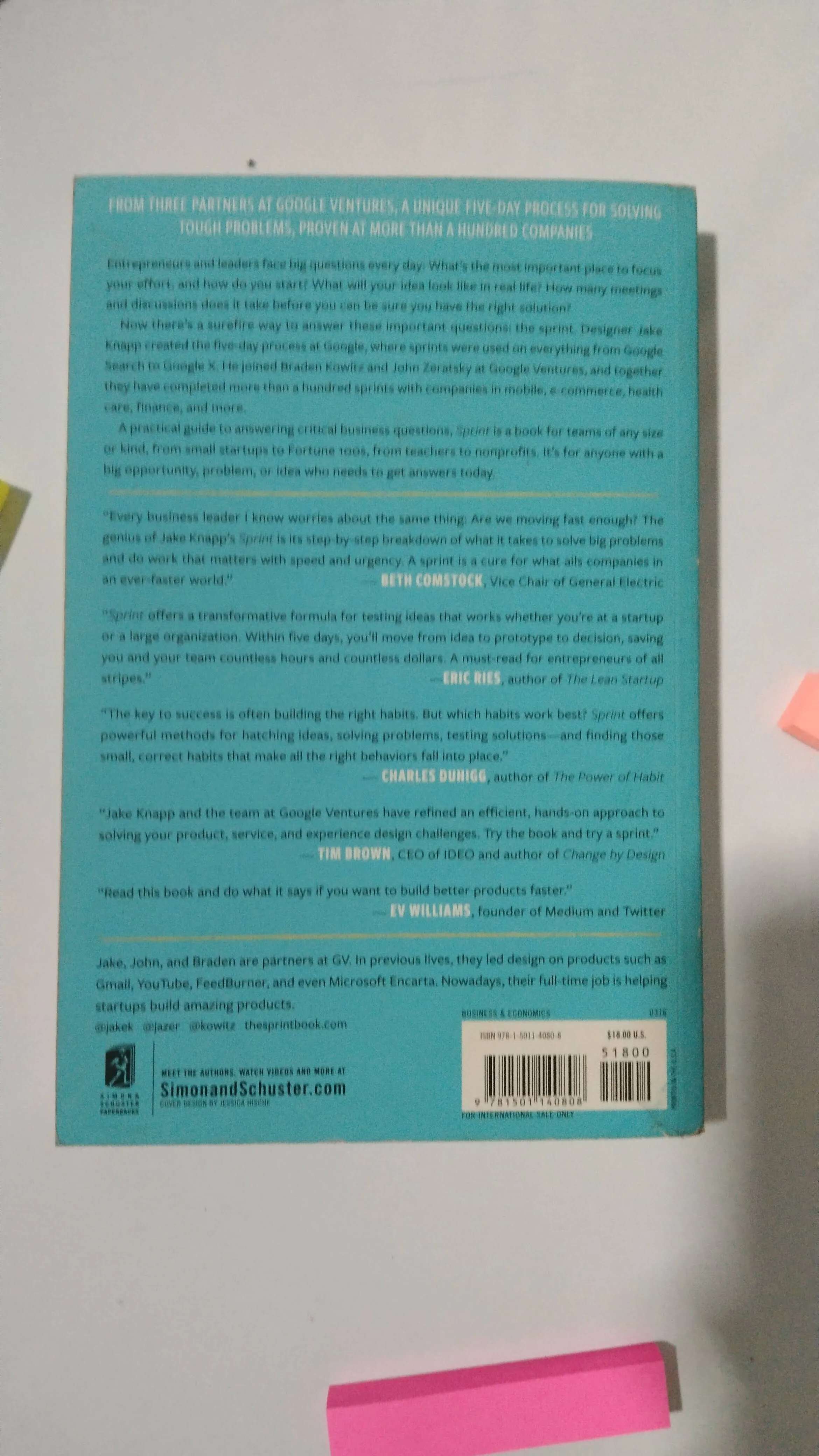Sprint: How to Solve Big Problems and Test New Ideas in Just Five Days
by Jake Knapp
Explains a process for solving big problems and testing new ideas through a structured five-day sprint process, which is designed to help teams move quickly and efficiently from idea to prototype.



"The Sprint process teaches teams to build and test a realistic prototype in just five days. It’s not just a design exercise. It’s a process for solving any big problem."
- Jake Knapp, Sprint: How to Solve Big Problems and Test New Ideas in Just Five Days.
My Review:
Sprint: How to Solve Big Problems and Test New Ideas in Just Five Days is a highly informative and practical guide on how to effectively tackle complex problems and test new ideas within a short period of time. Written by Jake Knapp, John Zeratsky and Braden Kowitz, the book provides a step-by-step process for conducting a sprint, which is a five-day process for answering critical business questions through design, prototyping, and testing ideas with customers.
One of the key strengths of the book is its clear and concise writing style. The authors do an excellent job of breaking down the sprint process into manageable steps, making it easy for readers to understand and follow. The book is also filled with real-life examples and case studies, which help to illustrate the concepts discussed and provide a clear picture of how the sprint process can be applied in different industries.
The book is divided into three main parts: the setup, the sprint itself, and the follow-up. The setup is all about preparing for the sprint, including setting goals, selecting participants, and identifying the problem to be solved. During the sprint, the authors guide readers through the process of sketching, prototyping, and testing ideas with customers, providing detailed instructions and examples of each step. In the follow-up, the authors discuss how to analyze the results and implement the most promising solutions.
One of the most valuable lessons I learned from the book is the importance of focusing on the problem, not the solution. The authors explain that it is easy to get caught up in brainstorming solutions without first understanding the underlying problem. By focusing on the problem, the team can come up with more effective solutions that truly address the root cause.
Another important lesson is the power of prototyping. The authors emphasize the importance of creating a tangible representation of an idea, as it allows the team to quickly test and validate the concept with customers. This helps to avoid wasting time and resources on a solution that may not work in the real world.
I also learned about the importance of user testing. The authors explain that it is essential to test ideas with customers as early as possible to gain valuable insights and make adjustments accordingly.
The book also emphasizes the importance of getting the right people in the room. The authors explain that it is important to have a diverse team with different perspectives and skills to ensure that all angles are covered.
Another valuable lesson is the importance of setting clear goals. The authors explain that by setting clear goals, the team can stay on track and make sure that the sprint is focused on achieving the desired outcome.
I also learned about the importance of time constraints. The authors explain that by working within a tight time frame, the team can stay focused and avoid getting bogged down in unnecessary details.
The book also talks about the importance of follow-up. The authors explain that it is important to analyze the results of the sprint and implement the most promising solutions.
In conclusion, Sprint: How to Solve Big Problems and Test New Ideas in Just Five Days is a highly informative and practical guide on how to effectively tackle complex problems and test new ideas within a short period of time. The book provides a clear and concise process for conducting a sprint, and is filled with real-life examples and case studies that help to illustrate the concepts discussed.
Some of the lessons I learned from this book are:
- The power of a sprint process in solving big problems and testing new ideas in a short period of time
- The importance of bringing together a diverse team with different perspectives to work on a sprint
- The benefit of focusing on one specific problem or idea for the duration of the sprint to achieve maximum results
- The value of creating a clear, concise, and actionable plan at the end of the sprint process
- The effectiveness of using design thinking techniques such as sketching and prototyping to quickly test and iterate on ideas
- The importance of having a dedicated facilitator to keep the sprint process on track and manage group dynamics
- The need to set clear goals and objectives for the sprint, and to measure progress against them
- The benefit of having a "decider" or decision maker present during the sprint to make quick, informed decisions
- The importance of user testing and feedback to validate and improve ideas
- The potential of the sprint process to be applied to a wide range of industries and organizations.
Overall, 'Sprint: How to Solve Big Problems and Test New Ideas in Just Five Days' is a valuable read for anyone looking to tackle big challenges and test new ideas in a fast and effective way. The book provides a clear and actionable guide to the sprint process, and is filled with practical tips and real-world examples of how it has been successfully used in various industries. The authors, Jake Knapp, John Zeratsky, and Braden Kowitz, are all experts in the field of design thinking and innovation, and they bring a wealth of knowledge and experience to the book. The book is easy to read, and the examples and illustrations make it easy to understand the concepts and apply them to your own work. If you're looking to be more efficient and effective in your work, this book is definitely worth reading.